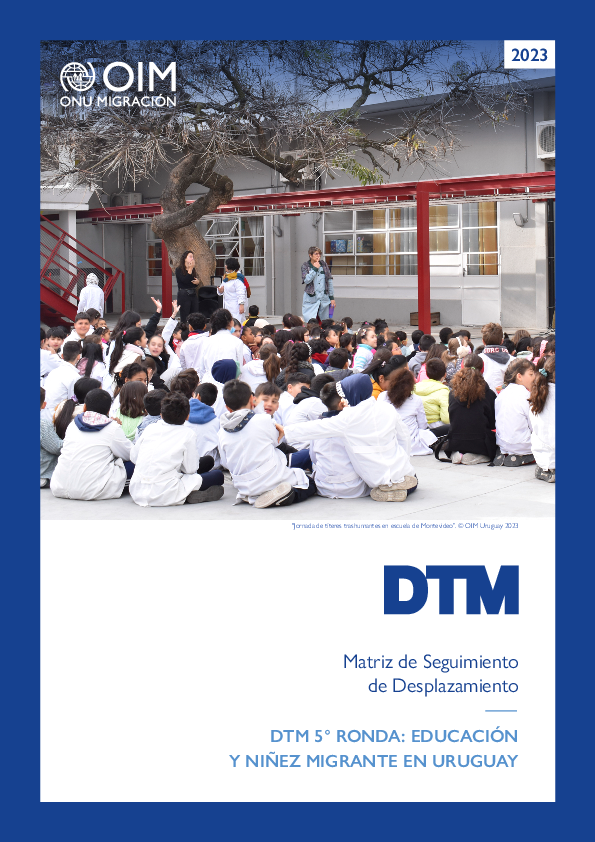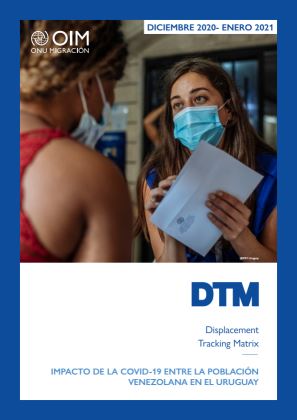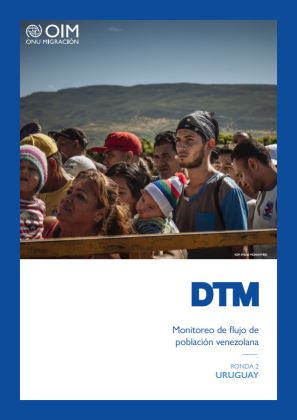-
Countries
-
Data and Analysis
-
Special Focus
-
Crisis Responses
Uruguay
Uruguay
IDPs tracked
Displacement Movements
No figure is available
IDMC 2023
Data collection round
About Uruguay
Owing to the increase of immigrant flows from Venezuela in Uruguay, the DTM has been activated in 2018 to obtain a profile of the Venezuelan population and to know the conditions of displacement to the country. The first DTM Round developed in Montevideo had the objectives of knowing the particularly needs of Venezuelans arriving in Uruguay, as well as their trip to the country; their migration and employment status, and the level of health access.
The second DTM round was carried out in the department of Rivera (border with Brazil) to identify needs, the availability and access to services, vulnerability situations, the migrations routes carried out and the risks of protection of recent migrants, not exclusively Venezuelans. In November 2019, the third fieldwork activity will be held in Montevideo surveying Venezuelans, in order to update the information obtained in the first Round.
For this, DTM has been working closely with five government agencies: Ministry of Foreign Affairs, Ministry of Social Development, Presidency of the Republic, Ministry of Interior and Ministry of Labor and Social Security to disseminate information obtained through data collection. The aim of this triangulation is to provide current and critical information to government decision makers and to the agencies that respond to crisis contexts.
Through DTM in Uruguay, it is possible to capture, process and disseminate information on a regular and systematic basis, providing better understanding of the movements and changing needs of migrant population in Uruguay.
Contact
Pizzarulli Lucila
lpizzarulli@iom.int
Current Donors
- PRM
Uruguay — Educación y niñez migrante en Uruguay: Resumen — DTM Ronda 5 — Montevideo (Febrero - Junio 2023)
En 2020 se estimaban cerca de 108.3 mil personas migrantes en Uruguay de las cuales el 29,6% eran menores de 18 años de edad.
Uruguay — Educación y niñez migrante en Uruguay — DTM Ronda 5 — Montevideo (Febrero - Junio 2023)
En 2020 se estimaban cerca de 108.3 mil personas migrantes en Uruguay de las cuales el 29,6% eran menores de 18 años de edad.
DTM Ronda 4 - OIM Uruguay - UNICEF: Estados de situación e impacto de la COVID-19 entre la población migrante en departamentos de frontera - Rivera y Rocha.
La Ronda 4 de la Matriz de seguimiento de Desplazamiento (DTM por sus siglas en inglés), realizada en los departamentos de Rocha y Rivera durante el 6 de julio y 13 de agosto de 2021, tiene como objetivo conocer la situación general actual respecto al acceso a servicios, inclusión, necesidades e imp
Uruguay — Impacto de la COVID-19 entre la población venezolana en el Uruguay - DTM Ronda 3 (Diciembre 2020- Enero 2021)
De acuerdo con datos reportados por la Plataforma Regional de Coordinación Interagencial para migrantes y refugiados de Venezuela (R4V), se estima que casi 5,5 millones de ciudadanos venezolanos han salido de su país para residir en el extranjero, y alrededor de 4,6 millones están en Améric
Uruguay — Monitoreo De Flujo De Población Venezolana 2 (December 2019)
Los datos del último Censo de Población (2011) de la República Oriental del Uruguay (en adelante Uruguay), permitieron vislumbrar un cambio en la composición por origen de sus inmigrantes, tendencia que se consolida desde 2013 con un aumento y un cambio en el origen y el perfil de los inmig
Uruguay — Monitoreo de Flujo de Población Venezolana 1 (Octubre 2018)
Uruguay se ha caracterizado desde las últimas décadas por ser un país expulsor de población, reduciéndose la inmigración a los movimientos fronterizos desde Brasil y Argentina.








